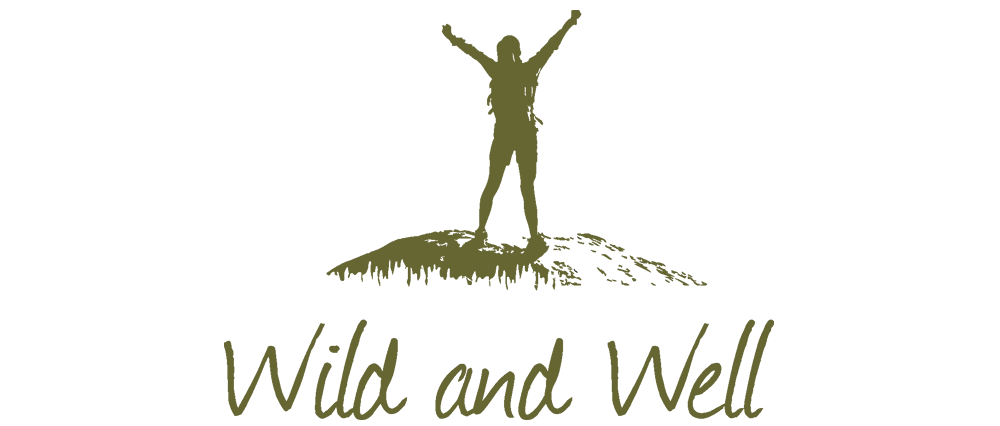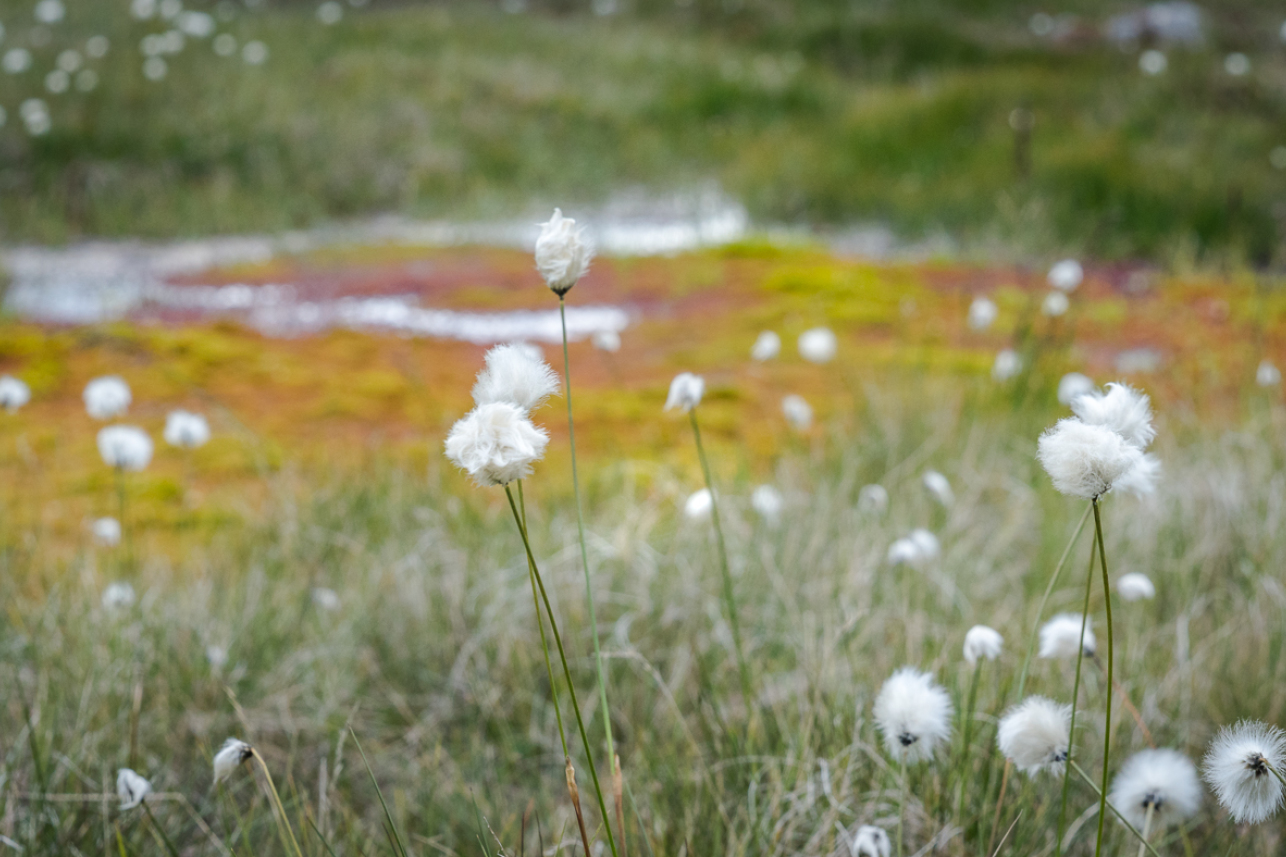Wild and Well: Nature’s healing hands
As society starts to embrace the power of the natural world to improve wellbeing, our John Muir Award England Inclusion Manager Coralie Hopwood digs deeper to find out more about ‘green therapy’ and its wider impact.

Everyone will be affected by poor mental health at some time in their lives. I have found that being in a living landscape with sun, rain, wind or snow on my face is one of the best antidotes to anxiety and depression that I know.
The words of Octavia Hill, the English social reformer and founder of the National Trust, resonate deeply with me: “We all need space; unless we have it we cannot reach that sense of quiet in which whispers of better things come to us gently... The need of quiet, the need of air, and I believe the sight of sky and of things growing, seem human needs, common to all.”
And I’m not alone. Ample evidence exists to highlight links between natural environments and mental health. From GPs ‘social prescribing’ nature walks and bird surveys, to ‘self-care courses’ based on psychology, wellbeing, and conservation, responses to this evidence are becoming more mainstream.
Gavin Hill, Head of Community Services for the mental health charity Mind says: “Ecotherapy, such as outdoor exercise and getting out into nature, is not only good for mental health but can also help address the social issues that come with having a mental health problem. It has been shown in some cases to be more effective – and cost less – than medication.”
It isn’t just humans who benefit. People who have a strong connection to nature also tend to have a greater sense of environmental responsibility. But it’s complex. Our response to nature is tied up with how we experience our time outside.
When we have space to absorb and reflect, share with others, engage in meaningful activity and develop a personal relationship, we are more likely to form a closer bond with the natural world.
A landmark academic study published in May 2017, Pathways to Nature Connection, demonstrated that emotion, compassion, meaning and beauty are as vital as basic contact when it comes to enabling this bond.
Given the benefits of fostering closer relationships, we must acknowledge inequality of access. The National Lottery Heritage Fund seeks to address this by insisting that projects they fund should involve a wider range of people.
The organisation’s Policy Adviser on Communities and Diversity, Liz Ellis, and its Head of Landscape and Nature, Drew Bennellick, agree that the UK is an unequal society with uneven access to all areas of heritage. Liz said: “This outcome is a brilliant opportunity for everyone applying to NLHF to think about who is not involved in landscape and nature, what the barriers are, then work together to find solutions.”
Slowing environmental damage depends on individuals making small but significant choices about how they live. By meeting people where they are, and enabling them to connect to nature on their own terms, we can strive to develop society-wide environmental advocacy.
In my role with the John Muir Award I support many organisations working to improve mental health and access to nature, through diverse and innovative partnerships. I am always privileged to hear of the impact they have on both wildlife and on those involved, as this shows how mental health is intrinsically linked to the health and resilience of our wider environment.
We cite here five examples of groups that bring people and nature together to respond to that “human need, common to all” described by Octavia Hill.
1. Cwm Idwal National Nature Reserve, Snowdonia
“We use Cwm Idwal National Nature Reserve in Snowdonia as a place to introduce people to nature walks in the mountains where participants are able to partake in mindfulness and meditation sessions. Natural environments are invaluable to supporting people with health issues as people are able to interact with the natural environment, while exercising both the body and mind.
“At Cwm Idwal there is plenty of fresh air, and the cultural and linguistic history gives a sense of connection to the landscape.”
- Guto Roberts, Partnership Officer, Cwm Idwal
2. Woodland Minds and Woodland Rescue, Suffolk
“The groups we engage with are marginalised members of society, mostly coming from a mental illness or addiction recovery background. We remove people from their usual environmental cues and take them to a space where they can develop positive patterns of behaviour and start to identify with that personality. The natural rhythm of the woods enables peoples’ minds to slow down to match it.
“They can be mindful and allow their creativity to come to the fore and it helps re-affirm that we are part of nature, not separate from it. Watching the change from winter to spring, year upon year encourages us to clear out the old and usher in the new, filling us with optimism. We do things we didn’t know we were capable of, confidence starts to grow and we start to succeed.
“Living in the woods and using tools is the environment humans evolved in for thousands of years. It is a reassuring place to return to, particularly at times of difficulty.”
- Andrew Brooks and Peter Foster, Green Light Trust
3. Bethlem Royal Hospital, London
We spoke to Imogen Jackson, horticultural instructor at the Bethlem Royal Hospital in London, to find out more about their therapeutic use of the outdoor environment.
What is the nature of the ‘green therapy’ offered at the Bethlem Royal Hospital?
The programme was created by Peter O’Hare, Head Occupational Therapist, 10 years ago when he fought to get use of an old Victorian walled garden, used by the keepers but not accessible to the patients. We now work with a wide range of people with diverse mental health conditions, either in-patients or out-patients at the hospital. The programme offers a range of therapeutic, horticultural interventions as well as providing routine, meaningful work or simply an opportunity to get off the ward. It offers a chance for people to get outside, engage with nature and reconnect.
Reconnecting with the growing cycles of nature and the food you’re eating is all really powerful. There is a lot of metaphor to be found working in the garden. It encourages an acceptance of life and death and can develop an inclination to nurture something else. If you’re used to being looked after yourself this can be tremendously empowering.
Feeling the elements, whatever they are, is also very important. We encourage people to go outside whatever the weather. The other day I was thrilled when I offered a walk in the woods in the rain, or an indoor activity, and everybody chose the walk in the woods!
How does the John Muir Award support your work?
The John Muir Award allows space for that additional reflection which isn’t the focus in other groups. The group connect their Award activity to many other activities at the hospital, including art, mindfulness, woodwork (making hedgehog boxes!) and practical horticulture. The sharing aspect adds a huge amount – specifically in relation to how being outside makes people feel.
The Award structure allows us to be very patient-centred and co-develop the programme with participants. We run an eight-week course which gives an opportunity to create a safe space and for progression and consistency. People are also encouraged to do something else in between sessions, such as research on John Muir or the owls outside their window.
It also ties in well with therapies. People can struggle with silence, and being with their own thoughts and focusing on the natural world becomes a way to externalise anxiety and connect with something else. For example, some participants have discovered a more mindful way of birdwatching. The Award means different things to different people. For one person it was their first award ever. We love doing it!
4. Wild Ways Well, Cumbernauld
“Wild Ways Well is based on the concept that being outdoors, in nature, makes everyone feel better about themselves and their lives. We take people out into green spaces and show them the incredible places that exist right on their doorsteps.
“Our sessions are aimed at anyone suffering from, or at risk of, poor mental health – which means everyone. You don’t have to be a nature expert to take part; we’re all part of nature. “One of our participants said: ‘It’s about peace and calmness. Nature doesn’t judge you, it just is.’”
- Paul Barclay, Cumbernauld Living Landscape
5. Wild Learning with Woodland Wellbeing, Devon
“I brought my work outside 15 years ago as I could see that people function better in a natural setting.Our sessions are loosely based on a day-long forest school session.
“We sit together around the fire and have a check-in, drinking tea and eating toast. Then we go for an ‘explore’ walk, find things, and stop for at least five minutes under the trees and be quiet, alone. Once back, people choose from cooking, conservation tasks, crafts and green woodworking. That takes up the rest of our time together; people can be alone or in a small group and we all achieve things.
“We encourage each person to find their place, make the most of what they have. People say that being in the woods helps them to cope with their (sometimes chaotic) lives, to make changes and to make friends.”
- Jenny Archard, Neroche Woodlanders
This article first appeared in the Spring 2019 edition of the John Muir Trust's Members' Journal.
